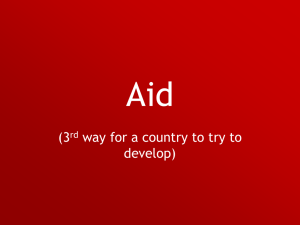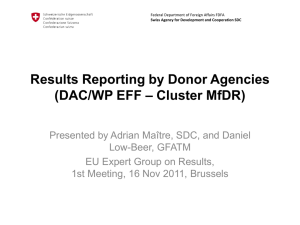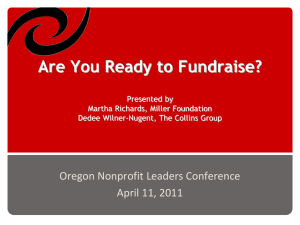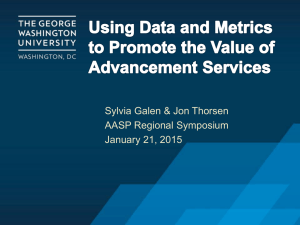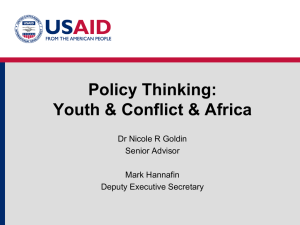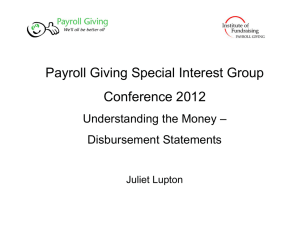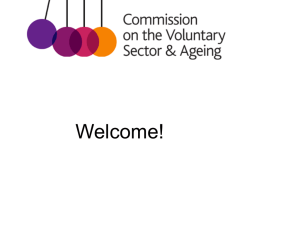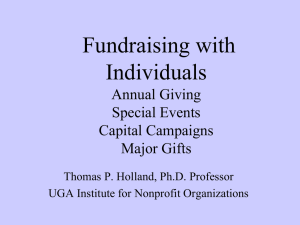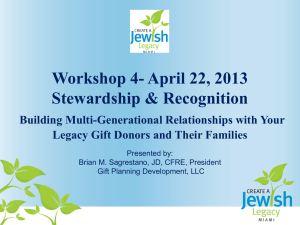Basics of Donor Relations
advertisement
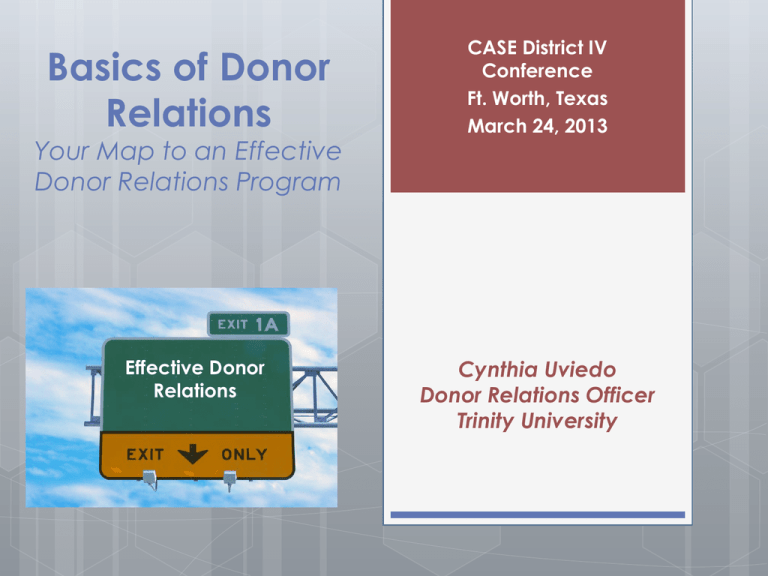
Basics of Donor Relations Your Map to an Effective Donor Relations Program Effective Donor Relations CASE District IV Conference Ft. Worth, Texas March 24, 2013 Cynthia Uviedo Donor Relations Officer Trinity University Overview/Road Map What is Donor Relations and why is it important Assessing your organization’s DR activities Getting started Ideas and Samples Q&A Donor Relations The comprehensive effort of any nonprofit that seeks philanthropic support to ensure that donors experience high-quality interactions with the organization that foster long-term engagement and investment. This effort is commonly thought to have four elements: Gift acceptance and management Acknowledgment Donor recognition Reporting Source: Association of Donor Relations Professionals (ADRP.net) Stewardship Reporting element is commonly referred to as stewardship. Historically, defined as the safeguarding of the assets of others. Activities associated with stewardship are focused on ensuring that the funds provided by donors are utilized in the way intended as conveyed in gift agreements and fund terms. By this definition, stewardship is a function inherently internal to an organization, rather than a donor-facing, external function. Source: Association of Donor Relations Professionals (ADRP.net) Stewardship Noun 1. a process whereby an organization seeks to be worthy of continued philanthropic support, including the acknowledgment of gifts, donor recognition, the honoring of donor intent, prudent investment of gifts, and the effective and efficient use of funds to further the mission of the organization 2. the position or work of a steward Source: AFP Fundraising Directory, www.afpnet.org Fundraising Cycle Identify Steward Cultivate Solicit Donor Relations Cycle Donor Makes Contribution Ask Again Account Acknowledge Appreciate Janet L. Hedrick, "Effective Donor Relations" Why is Donor Relations Important? Cost of acquiring new donors Why do donors stop supporting your organization Assess Where You Are Assess Where You Are Start Behind the Scenes Gift Acceptance and Management Policies and procedures Process for review of gifts – can we do what the donor wants us to do? Structure for giving opportunities Process for tracking gifts as they are expended Assess Where You Are Start Behind the Scenes Acknowledgement Private communication Accurate, timely, and meaningful expressions of gratitude Includes receipting and personalized, written correspondence Assess Where You Are Start Behind the Scenes Donor Recognition Giving societies, Honor Rolls Donor walls, named space signage Internal and external publicity Donor recognition events, engagement opportunities Assess Where You Are Start Behind the Scenes Reporting Stewardship What is the impact of the donor’s gift on the mission of your organization Qualitative Quantitative Getting Started on the Donor Relations Road Gift Acceptance and Management MOU/Gift Agreement templates Who’s authorize to sign Include Business Office, Fiscal Affairs How are donor’s intent tracked Who is tracking Important – information feeds into reporting Review Acknowledgement Top-level acknowledgements/thank you letters from President, Chancellor, Dean, Headmaster, Board members From someone benefitting from the gift Student Faculty Parent member Sample of student thank you letter Donor Recognition Process of expressing gratitude for a contribution in a public way Signage Named opportunities Special presentation Appreciation events Gifts Donor Recognition Signage/Named Opportunities Scholarship Events Seated dinner for endowed scholarship donors Reception for annual fund donors Photo with donors Student speaker; donor/Board speaker Keep program short; time to interact with students Appreciation Events Special Presentation Appreciation Events Heritage Society Luncheon Special events for large donors Thank-a-thon Gifts Publicity Articles in your alumni magazine, website, e-newsletter For transformational gifts, news releases to the media Recognition among their peers Events Special publications for giving societies Recognition Caveats Donor Honor Roll debate Know your donors and their expectations Recognition Preferences: Expectants Moderates Frugal Secretive Anonymous – clarify what it means to each donor Laura Fredricks, “Developing Major Gifts: Turning Small Donors into Big Contributors” Reporting Stewardship/Endowment Reports Principal Market Value of Endowment Gifts received Distributions from endowment How funds were used Scholarships - name and information on scholarship recipient Professorships/faculty support – activity summary of faculty member Lectures/programs – summary of events supported Sample Endowment Report Sample Endowment Report Reporting Annual Reports Reports on unrestricted gifts Show overall impact on your organization **Communication is key! Reconnecting with donors on a regular basis Reminding them about what their gift is doing Beware of DR pitfalls If implementing a program with existing staff, be reasonable about expectations. Start with one new project per year to see how it impacts other work. If starting with someone dedicated to DR only, don’t dump all the “extra stuff” on them. Discuss with the Development team about what it the expectation for this person. Caution with special events! Questions? Donor Relations Resources Association of Donor Relations Professionals ADRP.net Donor Relations Guru – Lynne Wester donorrelationsguru.com Effective Donor Relations by Janet Hedrick (AFP Nonprofit Essentials series) Cynthia Uviedo Trinity University cuviedo@trinity.edu 210-999-8075
